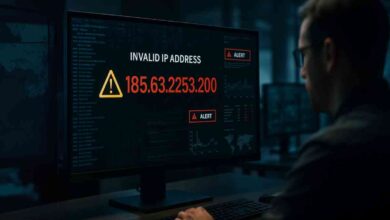What Is 24ot1jxa? Uncovering the Truth Behind the Code

In a world increasingly reliant on digital identifiers, codes, and tokens, the string “24ot1jxa” has sparked curiosity and unease in equal measure. What is 24ot1jxa? Is it just another meaningless set of characters, or does it point toward something deeper, perhaps even dangerous? As the internet continues to grow more complex and interconnected, encountering strange alphanumeric strings is no longer uncommon. Some are harmless, used in backend systems, while others may have ties to more suspicious activity. In this article, we’ll dive deep into understanding what 24ot1jxa might be, explore its potential implications, and explain how users can stay informed and protected in an increasingly opaque digital world.
The Code That Raises Eyebrows
The term 24ot1jxa doesn’t show up in any official dictionary, software documentation, or coding standard. It isn’t a known abbreviation, keyword, or acronym in the tech world. So why has it appeared in URLs, web trackers, or search queries? Typically, a string like this may be generated randomly as part of a software system. Systems like content management platforms, tracking software, databases, or even malware scripts often create such identifiers. These sequences are built to be unique, cryptic, and sometimes deliberately obscure.
Yet the rising interest around 24ot1jxa suggests something else. Some users reported seeing the string attached to suspicious emails, link trackers, or URLs that redirect to unknown or deceptive domains. That naturally raises questions: is it a unique ID, or part of something more malicious? That’s exactly why people are searching why 24ot1jxa harmful across platforms.
Understanding What 24ot1jxa Might Be
There’s no definitive public record or whitepaper outlining the purpose of 24ot1jxa. However, based on its structure and context, we can make educated guesses. First, this type of identifier could be generated as a tracking token, used to monitor a user’s engagement with a web link, email, or page. Marketers and analytics tools often embed such strings in URLs to trace behavior without requiring cookies.
Second, 24ot1jxa could be a session ID used by certain web applications. When users log into systems, temporary tokens help maintain session integrity. These are usually obfuscated to prevent unauthorized access.
Third, it might be a malware signature or file hash—a clue embedded by software that’s attempting to hide in plain sight. Strings like this can sometimes indicate polymorphic malware, where code signatures mutate with each infection. If you’re wondering is 24ot1jxa harmful, the context in which it appears determines the answer.
What Makes It Suspicious?
While many random-looking strings are harmless, the concern with 24ot1jxa arises when it’s associated with unfamiliar or risky environments. If this identifier is consistently tied to misleading redirects, suspicious domain names, or unsolicited downloads, the alarm bells go off. It may be tied to a phishing campaign where attackers embed custom identifiers to trace victims who interact with fraudulent links.
Another reason for concern is that such strings are sometimes used in malicious tracking mechanisms. These identifiers are hidden in web pages, emails, or scripts and collect data on user behavior. Unlike legitimate trackers which disclose this behavior, malicious scripts do so without consent.
Could It Be Part of Something Legitimate?
Despite the fears, it’s also possible that 24ot1jxa is nothing more than a harmless internal string, like a database key or content slug. Systems like Firebase, MongoDB, and URL shorteners frequently generate nonhuman-readable IDs for referencing records. In many backend systems, these IDs are critical for keeping information organized, efficient, and secure.
In fact, tech tools such as Bitly, Google Analytics, and Mailchimp rely on tokenized links with segments that look eerily similar. They help improve link routing, monitor performance, or connect campaigns with specific audience segments. Without context, distinguishing between harmless and harmful uses becomes tricky.
Benefits of Using Unique Identifiers
When used correctly, unique identifiers like 24ot1jxa serve several important functions. First, they ensure security. A complex string that’s hard to guess makes it more difficult for unauthorized users to access protected content. Second, they help maintain data integrity in distributed systems by providing a consistent reference point.
In web development, such strings improve performance and efficiency by preventing duplication or confusion between datasets. In marketing, they aid in non-invasive tracking, which allows teams to measure the effectiveness of outreach without capturing private information directly.
Even in cybersecurity, unique IDs are essential to track incidents, classify malware, and link behavioral patterns across various systems. In all these cases, 24ot1jxa—or a similarly structured token—would be just another part of a larger, functional framework. Some even speculate if there’s a deeper 24ot1jxa ingredient that makes it function within those environments.
The Flip Side: How Attackers Might Exploit These Tokens
Unfortunately, the same mechanisms that help secure legitimate systems can be exploited by bad actors. Hackers and fraudsters use randomized IDs like 24ot1jxa in malware kits or phishing campaigns. These strings are embedded in links sent through emails or malicious ads. Once clicked, they may install software, steal credentials, or redirect users to cloned login pages.
Another dangerous application is command-and-control (C2) communication in malware. In these setups, infected systems communicate with a central server using hidden or encoded identifiers. These tokens guide instructions and data transfers between attacker and victim, with minimal detection.
The randomness and length of 24ot1jxa are typical features of such usage. While the code itself may not be malicious, its behavior and the environment in which it appears matter greatly.
How to Approach a String Like 24ot1jxa
If you come across 24ot1jxa in a link, email, or file, the first rule is not to panic—but don’t ignore it either. Treat it as a signal that deserves inspection. Here’s how to approach it:
- Analyze the URL or content. Tools like VirusTotal or URLScan.io can scan the link or file for any known threats.
- Check the source. Was the message expected? Is it from a verified domain or sender?
- Use security software. Let your antivirus or anti-malware solution examine the object.
- Avoid clicking unverified links. If it looks suspicious, it probably is.
These steps help you maintain a proactive stance without jumping to unnecessary conclusions.
Why Awareness Is the First Line of Defense
Understanding identifiers like 24ot1jxa is not just a matter of tech curiosity, it’s a matter of digital safety. The average user doesn’t need to know how such strings are generated, but they should know how to respond when they appear unexpectedly.
Awareness protects against manipulation. When users recognize that certain codes may indicate tracking, phishing, or redirection, they can act more cautiously. This shifts power away from malicious actors and toward informed digital citizens.
Conclusion
So, what is 24ot1jxa? At the surface, it’s a random-looking string of letters and numbers. But beneath that surface, it represents a larger conversation around data, privacy, and cybersecurity. Whether it’s a backend ID, a session token, or a potential malware flag, the meaning of 24ot1jxa depends on its context.
In our digital lives, staying informed is more important than ever. Learn to recognize unfamiliar patterns, understand their potential use cases, and always verify before you trust. Codes like 24ot1jxa are part of a vast and evolving digital ecosystem—and with the right mindset, you can navigate it confidently.
Stay informed—recognize hidden digital risks like 24ot1jxa.



